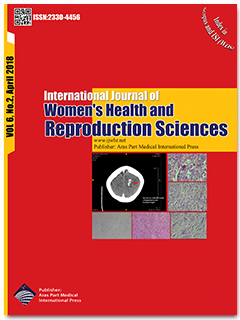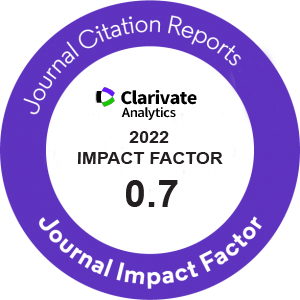| Original Article | |
| Evaluation of Sexual Function of Postmenopausal Brazilian Women | |
| Alinne Alves Inuy1, Ana Maria Menezes1, Fadlo Fraige Filho2, Caroline Alves Moreira da Silva1, Dolores Pardini1 | |
| 1Department of Endocrinology and Climateric, Universidade Federal de São Paulo, São Paulo, Brazil 2Deparment of Diabetes, Associação Nacional de Assistência ao Diabetes, São Paulo, Brazil. |
|
|
IJWHR 2018; 6: 140-143 DOI: 10.15296/ijwhr.2018.23 Viewed : 3892 times Downloaded : 2737 times. Keywords : Diabetes, Menopause, Sexual dysfunction |
|
| Full Text(PDF) | Related Articles | |
| Abstract | |
Objectives: This study analyzed for the first time the effects of diabetes mellitus on the sexual function of Brazilian postmenopausal women. Materials and Methods: In total, 184 postmenopausal participants were selected after meeting the inclusion criteria of occurrence of menopause, diagnosis of type 2 diabetes (T2D), ?1 year stable heterosexual relationship, active sexual life for >6 months, controlled associated chronic diseases, and absence of recent acute illness or psychiatric diseases. The participants were categorized into two groups, with and without T2D (control group). The control group comprised 84 women without diabetes, with mean 55 years of age, whereas the diabetes group comprised 100 women with T2D with a mean 59 years of age. Each participant filled out the nine-item Female Sexual Function Index (FSFI) questionnaire. The analyzed domains included desire, arousal, lubrication, orgasm, satisfaction, and pain. An FSFI score ?26.5 determined the occurrence of sexual dysfunction (SD). Results: The prevalence of SD was significantly increased in women with T2D (85%) compared with controls (69%; P = 0.001). Women in the T2D group had lower mean total FSFI score when compared with those in the control group (P = 0.004). As for specific questionnaire items, we found significant differences in regards to decreased arousal (P = 0.004), desire (P = 0.001), lubrication (P = 0.015), orgasm (P = 0.019), satisfaction (P = 0.002), and pain (P = 0.002) in the T2D group. SD was associated with diabetes duration in the T2D group and with age (P = 0.001) and menopause duration (P = 0.001) in both groups. Conclusions: Among postmenopausal women in Brazil, a diagnosis of diabetes increased SD prevalence and had an impact on arousal, desire, lubrication, orgasm, satisfaction, and pain. |
Cite By, Google Scholar
Google Scholar
PubMed
Online Submission System
 IJWHR ENDNOTE ® Style
IJWHR ENDNOTE ® Style
 Tutorials
Tutorials
 Publication Charge
Women's Reproductive Health Research Center
About Journal
Publication Charge
Women's Reproductive Health Research Center
About Journal
Aras Part Medical International Press Editor-in-Chief
Arash Khaki
Mertihan Kurdoglu Deputy Editor
Zafer Akan






















